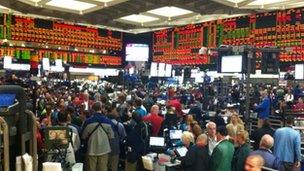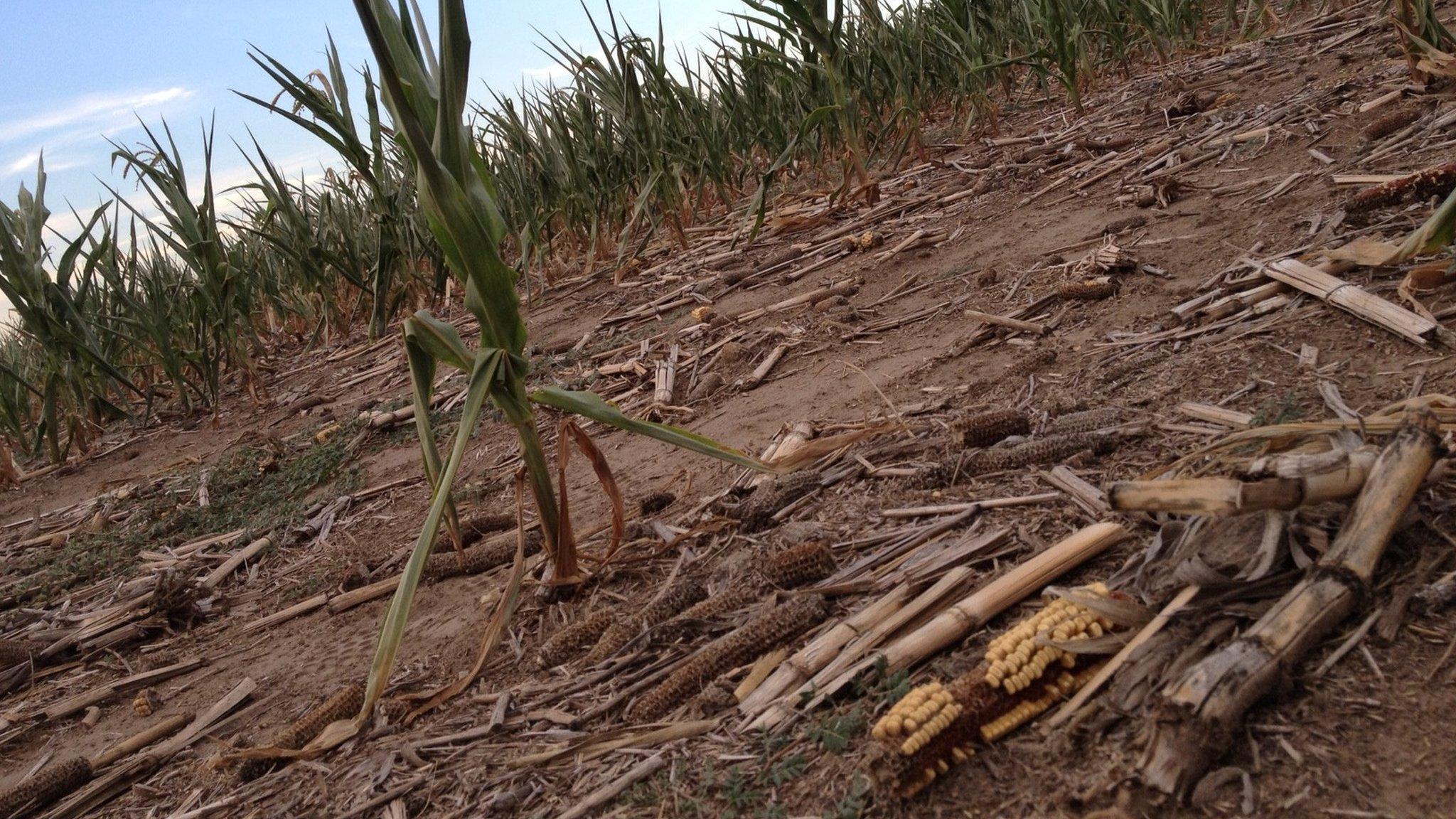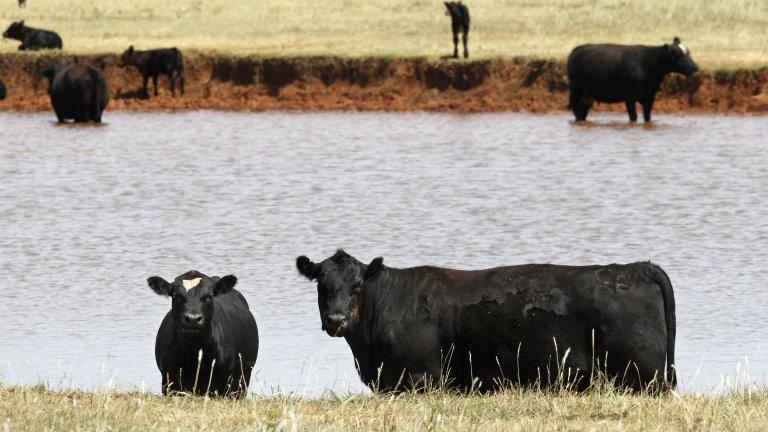US crops tell story of future world food prices
- Published
- comments

High temperatures and little rain have lead to a seriously damaged corn crop
Marion Kujawa strips back an ear of corn with disgust.
It's a weedy specimen, only a few inches long. Half way up the cob gleams a solitary golden kernel. The farmer's alarm at this measly harvest may soon be shared by consumers around the world, as food prices shoot up.
Then next ear he picks is even worse.
"There's nothing. Nothing. It should be 10 inches long, completely full of grain but the heat was so bad, 110 out here, that means 140 degrees coming off the ground. It's just burned up. I've done everything I can do. The rest is in the Maker's hands. I can't make rain."
The spry 73-year-old, kitted out in his John Deere cap and denim overalls has farmed these 2,000 acres (809 ha) in southern Illinois for more than half a century.
He's seen drought before. '54 was bad, he says and in the 80s he watched as some good men went under, through no fault of their own.
But this past July has been the hottest in American history and he's never seen anything like this. Devastation has come out of a clear blue cloudless sky, the lack of rain parching good ground into a cracked, pale grave for the crops.
'It's all gone'
We tramp through a landscape of shrunken brown plants, dried husks crunching under our feet as Marion searches for some small sign of fruitful growth. The best we can find is an ear that has produced seven kernels.
The corn should be seven feet (2m) high, waving above our heads, green and laden with fat heavy cobs, like the ones you eat slathered in butter. Instead, the tallest plant barely brushes our shoulders.
The folk around here don't like to sound defeatist. They will tell you that they've known hard times, got through them in the past and have faith they will again.
They are not among life's worriers and moaners. Yet their optimism and their prayers have yielded no rain. There is a realisation that for this year, this is it.
"You can't sell this. It's all gone. There's nothing there," Marion says, clutching a bare cob.
"We're on a downslide going into the middle of August. It's done. It's done. Some is going to be worse than others, but it's going to hurt. You have to be strong, but we got nothing to harvest."
His other crop, soya beans, look in a better state. At least the plants are green, and there is some hope for them if there is rain soon. But the pods are so small and tight that he can barely split them open with his penknife blade to show me the bean inside.
The sky is still a perfect cloudless blue and the forecasters have dropped their previous prediction of rain by the weekend.
It doesn't pay to be too optimistic.
Last year Marion sold a $1m (£639,000) worth of crops. This year he will be lucky to make $200,000. Crop insurance and his own prudence, conservatism as he calls it, should mean he will weather the lack of storm.
But there is no getting around the fact that two of the staples of the world food industry are about to become scarce commodities. That means they will also become more expensive.
Soya beans and corn make oil and animal feed, as well as ethanol, to some controversy. But they also go into products you wouldn't think about. Snacks, fast food, even soft drinks.
That means America's drought is going hit us all.
World economy fears
About 500 miles away from the cornfields of southern Illinois, in Chicago, Ceres, the goddess of agriculture stands atop the city's board of trade, the place that claims to have invented futures trading in in the 19th Century.
She has no face, perhaps so as not to show her shame at all the unanswered prayers. Inside, corn traders shout and raise their clenched fists in the air.
"Seven dollars."
"Seven, twenty-one."
"Nine, thirty-two."
"Take it, backed up."
Some gesticulate with both arms, fingers pointing or outstretched. It seems more like a pent-up strike meeting than commerce in action, but the fever will not lessen.

Inside the Chicago trading floor
They are all waiting for the crop production report, external on 10 August, which will set out the situation.
As we look at all the activity, Virginia McGathey, president of McGathey Commodities, external, tells me that she thinks the figures will be even worse than most people have been expecting.
"The prices are as high as they've ever been," she says. "This was supposed to be the biggest crop ever of corn. The weather was wonderful in the spring and now it looks like we could have lost 50% of the crop. At that point all bets are off."
She points out that American farmers are not the only ones who have been suffering through a lack of rain. It's been the same story in Russia, external, parts of Asia, and earlier in the year, South America, external.
"World food prices are definitely going up, and I believe they are going up to stay," Virginia McGathey says. She thinks corn prices could pass $9 a bushel, a price that would be "astronomical".
"If you think back in the day you could buy a pair of tennis shoes for $10, now they're like a $110, we're heading that way with grain prices. You're going to see prices go up, minimum 20% at the grocery stores."
The world economy doesn't need any more bad news at the moment, but the pathetically shrunken cobs in Marion's fields may be wizened heralds of blows yet to land.
- Published3 August 2012

- Published3 August 2012

- Published8 August 2012
